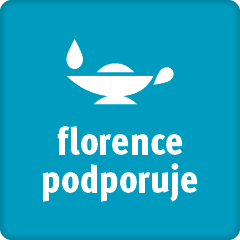


Číslo 9 / 2016
Snakebites

Snakebites are a cause of death in approximately 40,000-60,000 people a year worldwide. Out of 3,000 known snake species 400 are considered dangerously venomous. There is only one venomous snake species in the Czech Republic – the common European adder, or viper (vipera berus). According to statistical data, venom is released in 500 out of every 1,000 cases of snakebite and only one of these proves fatal in the Czech Republic.
Parent: Good morning, nurse. I would like to ask how my daughter is doing. She has been transported to this unit because she has been bitten by a snake at the summer camp.
Nurse: Good morning, Mr Snape. Your daughter is much better now. I'm going to call the doctor to give you more detailed information. Would you like to see her?
Parent: Yes, thank you. And could you tell me what to do next time in the case of snakebite? I am totally at a loss to know what to do in such a situation.
Nurse: The aim of first aid in the case of snakebite is to delay the absorption of the venom into the body. The person who has been bitten should therefore remain as still as possible and move as little as possible. All tight objects should be removed from the body, and the bite site should be disinfected and covered with a sterile dressing. Also, keep the bitten area below heart level.
Parent: How?
Nurse: For example, you can let the affected limb hang down loosely from the stretcher. And of course, you should immediately call for an ambulance or ensure transportation of the person who has been bitten to the hospital in such a way as to move as little as possible.
Parent: And should I compress the bite site with something?
Nurse: No, definitely don’t compress or suck the venom out of the bite. It is often recommended to apply a tourniquet on the limb using an elastic bandage. The intention is to bandage the limb from the bite site upward as far as possible. The limb should be immobilised in a similar way as in the case of a broken limb or a twisted joint, using for example a tree branch, a stick, a pole, etc. The most important thing, however, is to get the person to hospital as soon as possible.
Parent: All right. Thank you very much, nurse.
Nurse: You are welcome.
| snakebite | hadí uštknutí, kousnutí |
| worldwide | celosvětově, po celém světě |
| species | druh; třída; kmen |
| venomous | jedovatý |
| adder | zmije |
| viper | zmije |
| according to | podle, dle; v souladu s, shodně s |
| to release | uvolnit, vypustit; vydat |
| at a loss | nevědět si rady, v rozpacích |
| aim | cíl, smysl |
| to delay | zabrzdit, pozdržet; odložit; zpozdit |
| therefore | tedy, tudíž, proto |
| to remain still | zůstat v klidu |
| tight | těsný, utažený; napnutý; pevný; přiléhavý |
| to hang down | viset, viset dolů; svěsit; splývat |
| loosely | volně; uvolněně |
| stretcher | nosítka |
| to compress | stlačit; sevřít |
| to suck out | vysát, odsát |
| tourniquet | obinadlo, škrtidlo |
| upward | nahoru, vzhůru, směrem nahoru |
| branch | větev |
| stick | hůl; tyč; klacek |
| pole | tyč, kůl |
Lekce angličtiny pro časopis Florence připravuje překladatelská agentura ACP TRADUCTERA (www.traductera.com).
Ilustrační foto – zdroj: www.elegantnibydleni.cz
Další články v tomto čísle
- Nic zde není tak trvalé jako pomíjivost (Alexander Fleming)
- Význam hlášení mimořádných událostí v českém zdravotnictví
- Přinese systém vzdělávání 4 + 1 více sester do zdravotnictví?
- Jak se žije sestrám jižně za Kavkazem?
- Sestra cizinka v české nemocnici? Jde to. Chce to jen víc času a trpělivosti
- Kognitivní trénink pro třetí věk
- Stačí jen málo
- Ošetřovatelství pro střední zdravotnické školy – 2. ročník, 1. díl
- Diagnostika poruch polykání
- Kazuistika pacienta po výbuchu varny pervitinu












